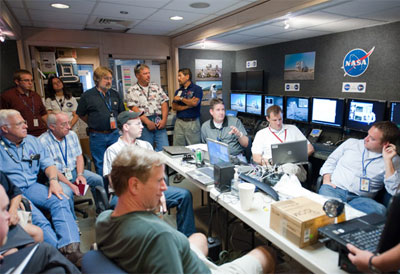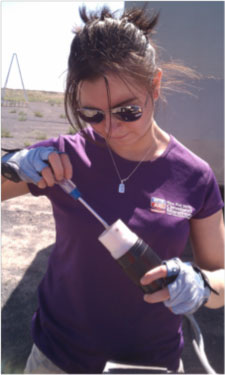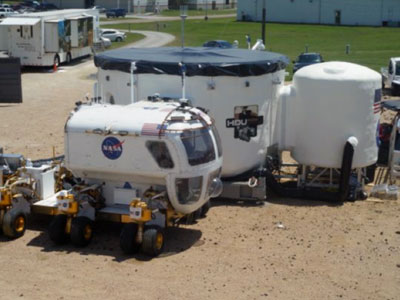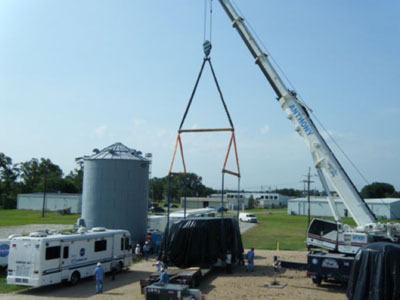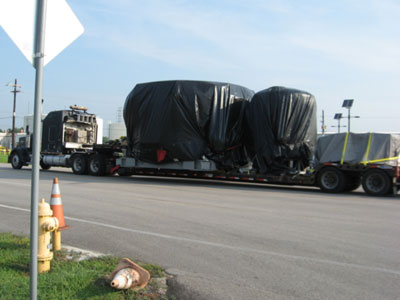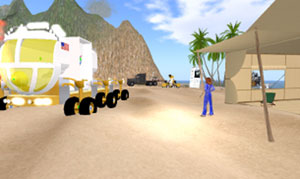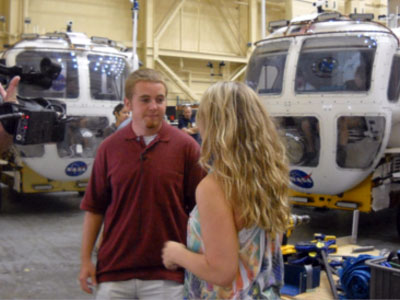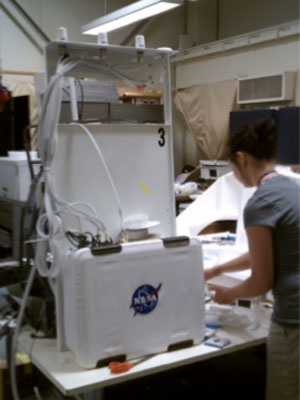WASHINGTON – A group of scientists experienced in working in the harsh conditions of the high Canadian Arctic this week began the 14th field season of the Haughton-Mars Project, HMP-2010. This year’s field season includes a three-week effort to assess concepts for future planetary exploration, including crew activities, robots and mission control.
During HMP-2010, researchers will study how lunar robotic “follow-up” activities can improve human exploration; they will use the Haughton Crater on Devon Island, Canada to simulate an approximately 75-mile long robotic convoy from the Shackleton Crater to Mount Malapert in the south polar region of the moon.
“Explorers, such as geologists, often find themselves with a set of observations they would have liked to make, or samples they would have liked to take, if only they had been able to stay longer at a site,” said Terry Fong, director of the Intelligent Robotics Group at NASA’s Ames Research Center, Moffett Field, Calif. “Our work this year is to study how remotely operated robots – perhaps even vehicles previously used for crew transport – can be used to perform follow-up work.”
Using robots for follow-up work could save astronauts from having to perform tedious, repetitive or very time-consuming activities. Additionally, robots could make measurements that complement or supplement those initially taken by humans. According to scientists and mission planners, there will be substantial amounts of time between crewed missions to use robots to perform research work on the moon.
At HMP-2010, NASA will deploy K10 robots, developed by the Intelligent Robotics Group at NASA Ames, which are equipped with a variety of instruments including a 3-D scanning lidar, color imagers, spectrometers and ground-penetrating radar. The K10s will perform follow-up work scenarios, such as systematic mapping of above- and below-ground structures and characterizing the rocks, soil and landscape of key areas at Haughton Crater in support of the Moon and Mars Analog Mission Activities Program in the Science Mission Directorate and the Exploration Technology Development Program in the Exploration Systems Mission Directorate at NASA Headquarters, Washington.
NASA also will conduct a series of experiments designed to examine how future lunar surface systems, such as crew rovers, might be robotically repositioned from one location to a new rendezvous location with astronauts.
”Poor lighting and low resolution of satellite imagery can make a planned route look very simple from above, but once we are on the ground we can see obstacles we couldn’t before that make the route unexpectedly challenging,” said Matt Leonard, principal investigator of the Lunar Surface System (LSS) experiment at Haughton Crater. “We will study how to use ground robots to scout alternative safe routes, categorize hard-to-detect obstacles and examine how best to prepare for venturing into unknown terrain,” he added.
In addition to working around unexpected roadblocks during future planetary convoys, the LSS experiment team will study how a robot on a set route with a fixed schedule can conduct science tasks, such as sampling or gathering images. To do this, the team will work with a K10 robot and HMP’s MARS-1 Humvee Rover field exploration vehicle, to simulate a large planetary crew vehicle equipped with science instruments. The LSS experiment is one of several Exploration Analog Missions being conducted this summer by NASA’s Exploration System Mission Directorate.
“When you are on a tight schedule to go from one location to another, or have to follow a specific route, it’s critical to determine the potential cost of making an unplanned stop or detour,” said, Pascal Lee, director of the Haughton-Mars Project at NASA Ames, chairman of the Mars Institute, Moffett Field, Calif., and a planetary scientist at the SETI Institute, Mountain View, Calif. “The Shackleton to Malapert traverse and future planetary traverses elsewhere may have only limited time for opportunistic science, so we need to understand what decision-making process will yield the highest science return.”
The Haughton-Mars Project is an international, multidisciplinary field research project focused on the scientific study of the Haughton impact crater and surrounding terrain on Devon Island in Canada’s high Arctic. According to scientists, the site’s polar desert setting, geological features, and microbiology, make Haughton Crater a good site for moon and Mars analog studies. The HMP is managed by the Mars Institute in collaboration with the SETI Institute.
For more information about the Haughton Mars Project, visit:
http://www.marsonearth.org
For more information about the NASA’s Exploration Analog Missions, visit:
https://www.nasa.gov/exploration/analogs
For more information about the NASA Ames Intelligent Robotics Group, visit:
http://irg.arc.nasa.gov
-end-

